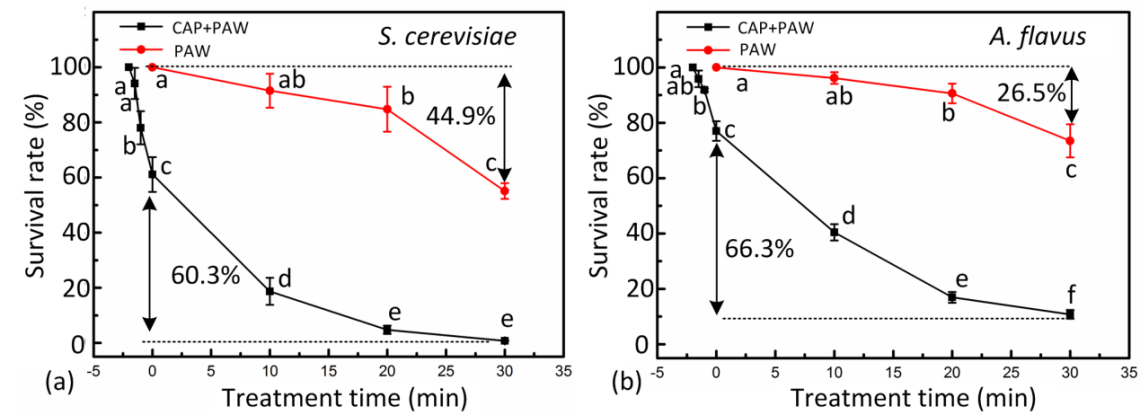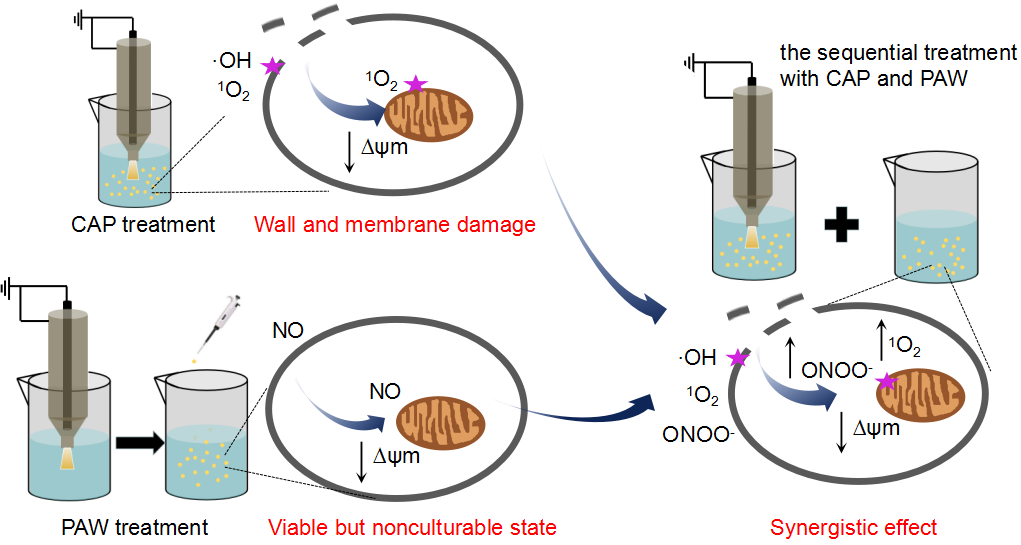
In recent research, Prof. Huang Qing's group from Hefei Institutes of Physical Science (HFIPS) of Chinese Academy of Sciences (CAS) proved combination of CAP and plasma-activated-water (PAW) showed synergistic fungicide effects.
The related research results were published in Chemical Engineering Journal.
The team has conducted a series of research on the mechanism and application of non-thermal plasma microbial disinfection and sterilization in past years.
In this study, they proposed the sequential use of cold atmospheric plasma (CAP) and plasma activated water (PAW) to inactivate two kinds of typical fungus (Saccharomyces cerevisiae and Aspergillus flavus).
Furthermore, they studied the fungicidal mechanism of CAP, PAW, and the combination of CAP and PAW.
They found that the combinated use of CAP and PAW had a synergistic effect and could effectively increase the fungicidal efficiency. In order to clarify this synergistic mechanism, they further studied the generation of RONS (·OH, 1O2, H2O2, ONOO-, NO2-, NO3-) by CAP or PAW, and especially detected the changes of various RONS (·OH, 1O2, H2O2, NO, ONOO-) in the cellular under the two treatment methods.
When CAP was applied alone, ·OH and 1O2 could cause the inactivation of fungi by destroying the wall and membrane structure.
While treatment with PAW alone could not directly cause the damage of wall and membrane, instead, it could cause the fungus to be in a viable but non-culturable state (VBNC).
"The synergistic effect under combined treatment of CAP and PAW is what we want," said Prof. HUANG Qing, who led the team.
He further explained the mechanism. Under the first stage of CAP treatment, the wall and membrane structure of fungi was damaged. In the subsequent PAW treatment, more 1O2 and ONOO- entered the cells and caused irreversible damage to mitochondria and energy metabolism system, thus leading to fungal inactivation.
This study provided an alternative method of using CAP combined with PAW to improve the killing efficiency of fungal microorganisms.
This research work was mainly supported by Anhui Provincial key research and development plans and China Postdoctoral Science Foundation.

The combined treatment of CAP and PAW increased the killing efficiency of Saccharomyces cerevisiae and Aspergillus flavus. (Image by XU Hangbo)

Different inactivation mechanisms of fungi under three treatments (CAP, PAW and CAP+PAW) (Image by XU Hangbo)